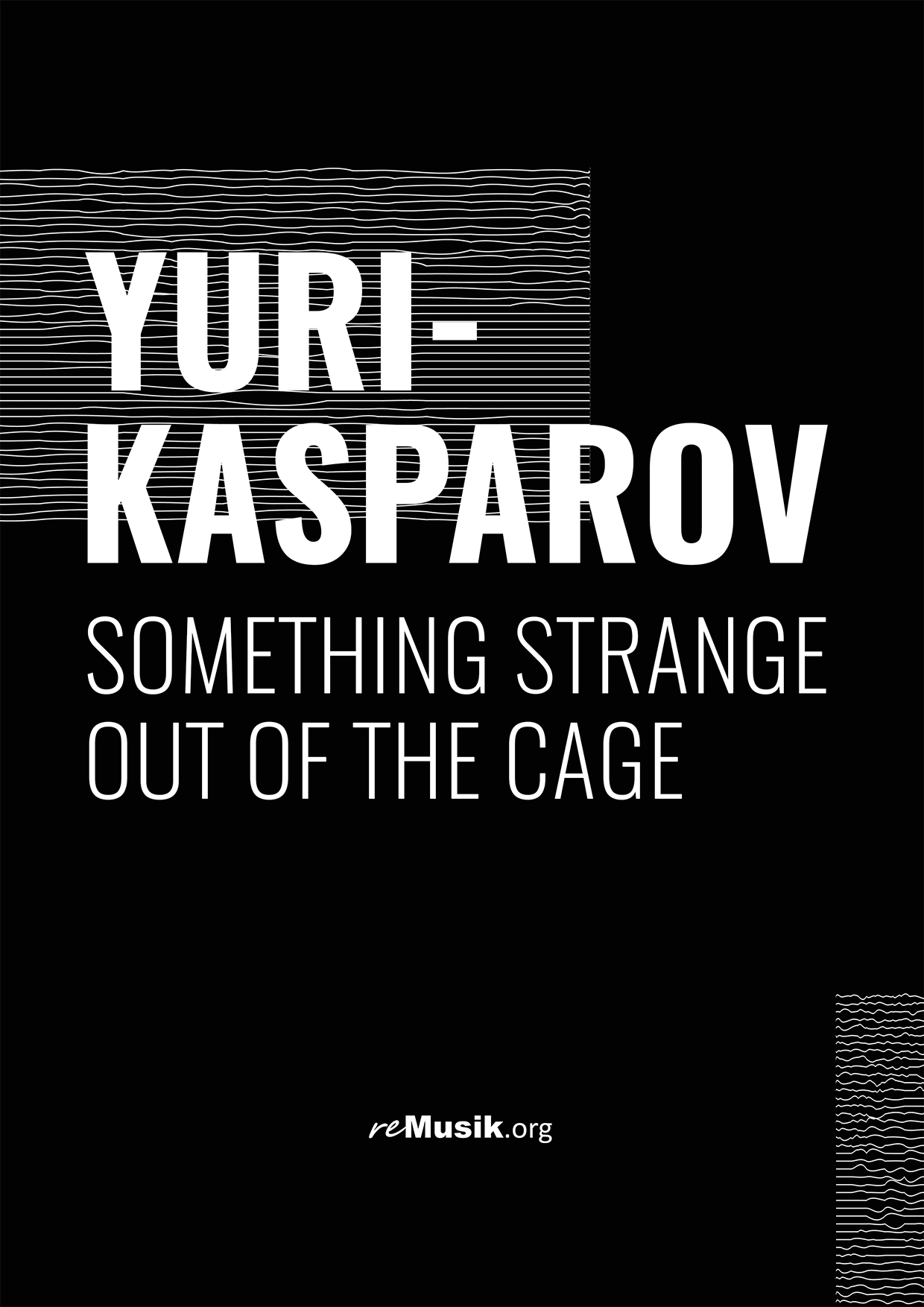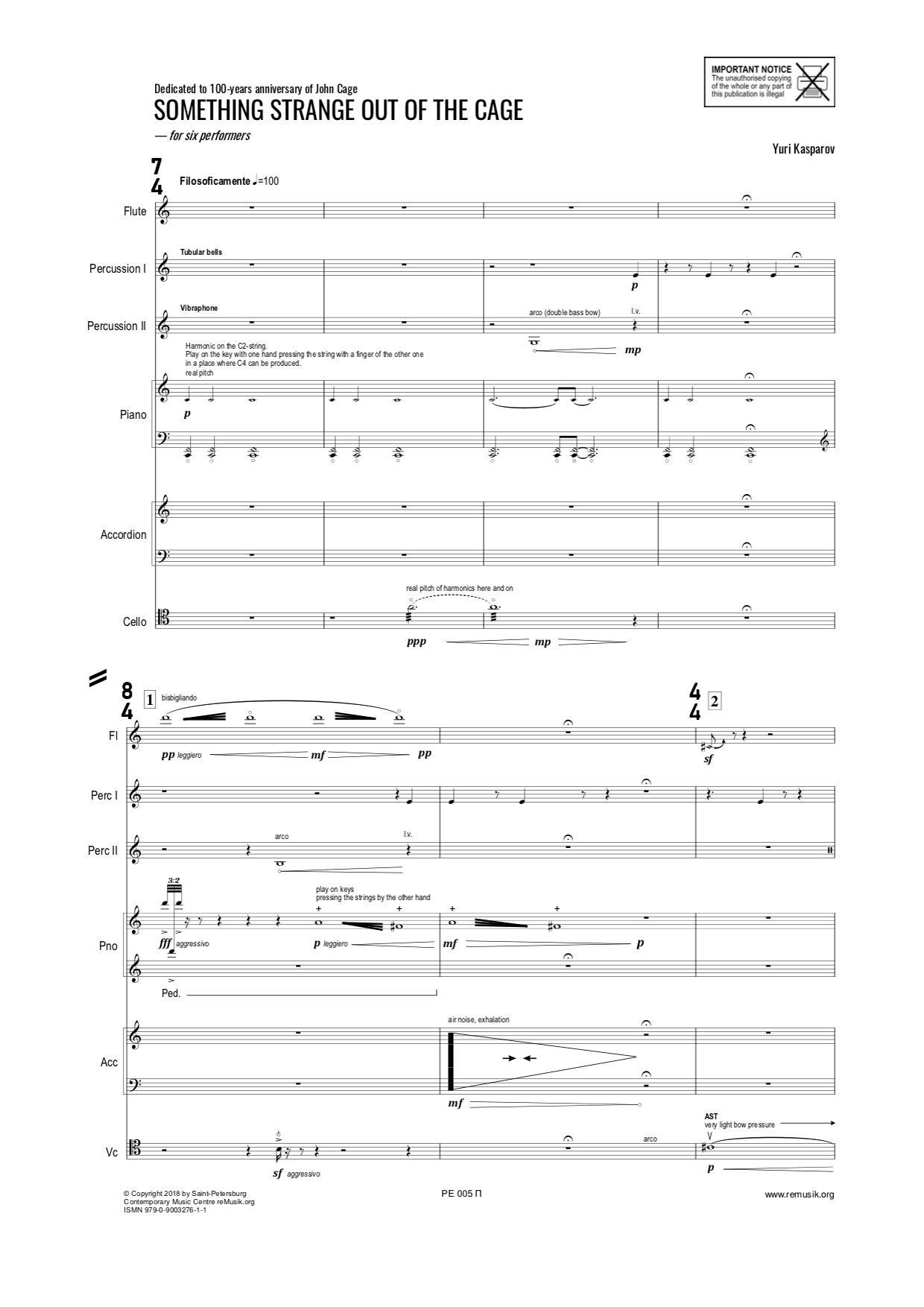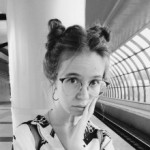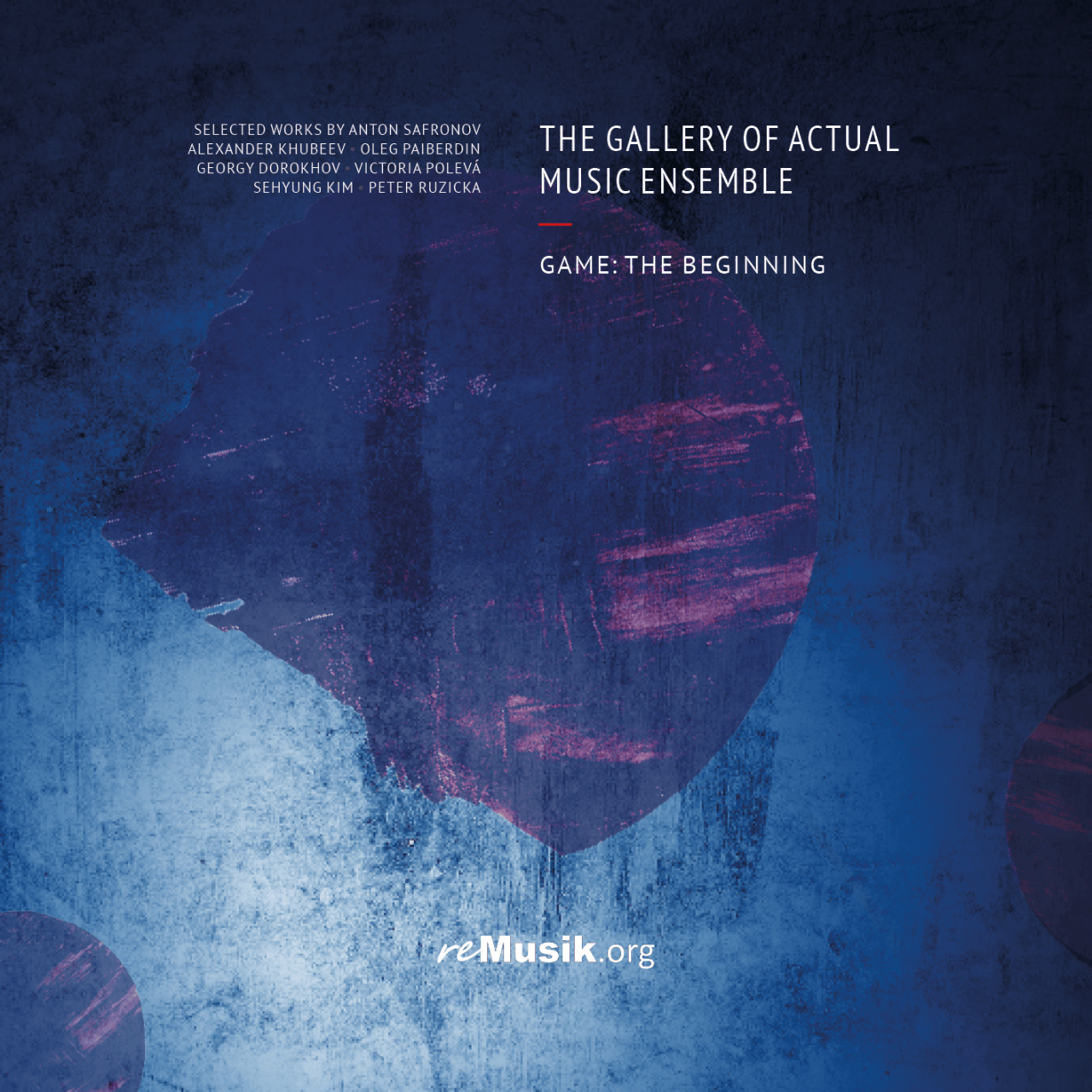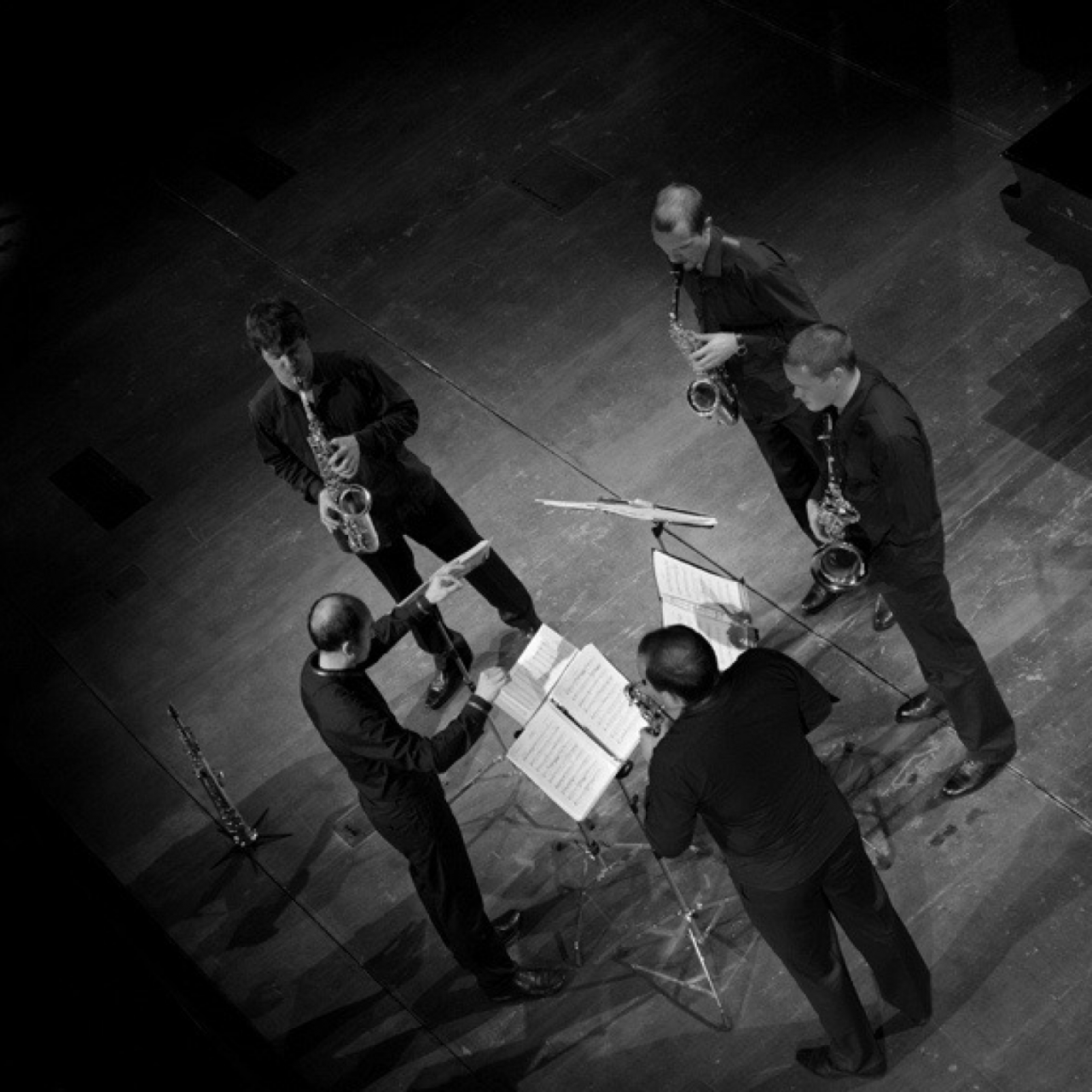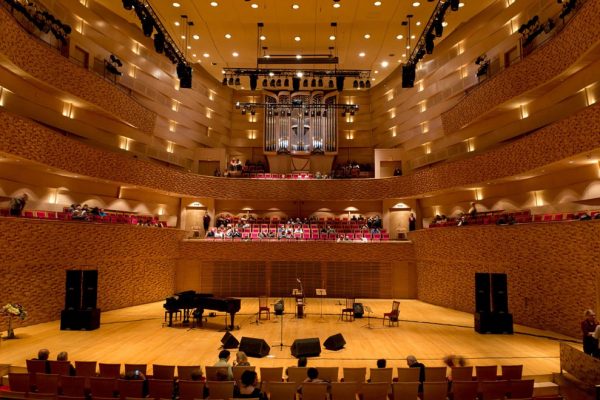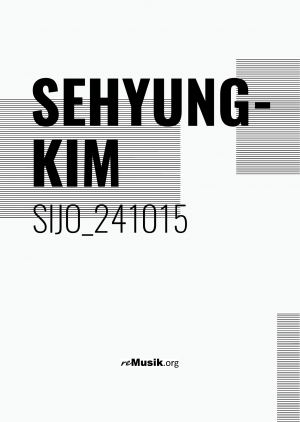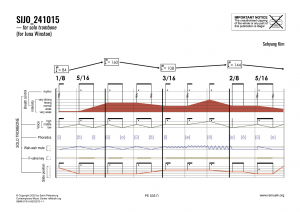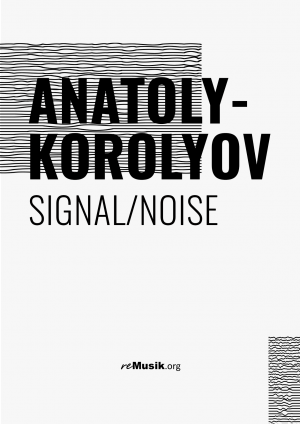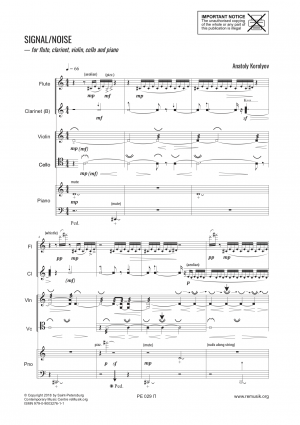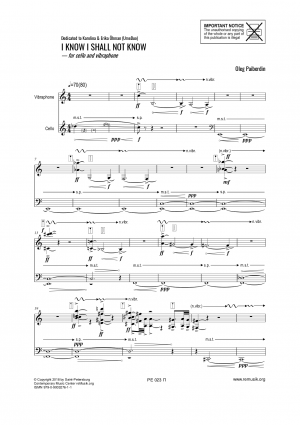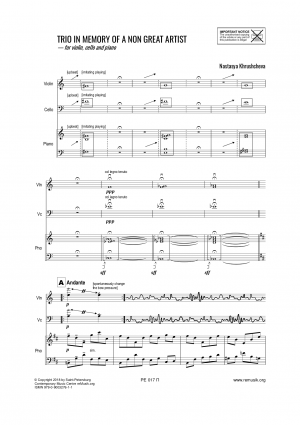Joanna Bailie:
«Photographs form the basis for many of my works»
Joanna Bailie:
«Photographs form the basis for many of my works»
In an interview with reMusik.org, composer Joanna Bailie answered questions concerning her participation as a teacher in the Online Сomposition Courses and also talked about her love of jazz and working on short films.
— What did you think about the reMusik.org courses? Do you have any preferences?
I was surprised how well the zoom format worked. I certainly felt as if I had met and engaged with my students after each lesson and that we didn’t lose too much by not actually being in the same room. There were a couple of connection problems and a few occasions where I would have liked to show the student something a bit more complicated or see a hard copy of score, but I think it really did work. Giving a lecture to 50 people while sitting by myself in my living room was a bit strange, but there is nothing wrong with having a strange experience now and then! It seemed that during the course we were in a different location together and I think I began to appreciate exactly what the word ‘virtual’ means, it’s a place. Of course, all of this was helped by the fantastic job Alexander Khubeev and the rest of the reMusik.org team made of organizing the courses. Everything went very smoothly. Personally I was happy to meet so many new people from all over the world, especially after having been alone through most of the lock-up. I was also glad to see such a variety of music coming from the students, and to witness their openness towards each other during the presentations. I think we all did a good job to help keep new music going during a time when it could quite easily grind to a halt.
— You said in the interview, “In some corners of the British new music scene, Darmstadt is still a dirty word, associated as it is quite wrongly, with only rigorous integral serialism”. What is Darmstadt today?
That quote is more about the conservatism of the British new music scene and their assumptions about European music, than anything else. I’ve been involved in Darmstadt, first as a teacher and then as a juror over the past few editions and I always find the experience exciting and the music there diverse. It’s really pretty big and there are lots of different “scenes” happening at the same time. Every time I go, I discover a new piece or a composer I didn’t know before and make some new friends. I get both inspired and annoyed by the things I encounter there, and I think that’s the way it should be. It is still a Mecca for young composers, a place where you can meet your peers and be exposed to a variety of work. I have only occasionally felt the ghosts of Stockhausen and Boulez wandering around (!) A few years ago I saw a clip of archive footage there. It was of Xenakis being driven around Darmstadt in the 1980s, and one could recognize all the familiar sights of the city. It was incredibly touching, a kind of new music nostalgia I would say.
— Could you tell us about your teachers? You studied composition with Richard Barrett. What’s the most important thing he taught you?
I actually met Richard at Darmstadt in 1994 while I was still doing my undergraduate degree. I was looking for somewhere to study in Europe and so I had a few lessons with the composers who were there and he was the only one with whom I made a connection. He advised me to come to Holland, study with him and take the sonology (electronic music) course. If you don’t already know his music you should check it out, pieces like Vanity, Dark Matter, Negatives. His work is kind of thrown in with the new complexity crowd, but it’s more interesting than that (for me anyway). He often incorporates improvisation and electronics. I think the important thing about him is that he can appreciate and understand art that does not lie within his own field of interests. I went to him with pseudo-new-complexity compositions and he saw immediately that I wasn’t really making “my own work”. He helped me to forge the path that would eventually lead to me finding my compositional voice. He always encouraged me to find strangeness, to look for interesting ways of generating material and not to worry too much about the new music mainstream. I haven’t had so many teachers, and the last time I had a lesson really was a long time ago! As an undergraduate I studied with Roger Redgate, and at Columbia University there was no one really important to me, although I did have an excellent music theory teacher in Jonathan Kramer who sadly passed away some years ago.
— You said in the interview, “Whenever I teach composition, I try to use Richard as my model”. What’s your teaching method?
I don’t really have a method as such, but I would say that I really try to engage with the students on their own terms. I’m not so interested in giving score-focused lessons, though sometimes it’s necessary if a student is just starting out and has notational issues. Score-focused lessons weren’t the way I was taught and for me, even in a purely instrumental conventionally-notated piece, the score only forms part of the puzzle that produces the music. Different students need different things and it’s my job to see what I can offer them. Sometimes it’s suggestions for how to go further with developing materials or thinking about form if they are stuck. Or maybe I give them a tip for something to listen to that might interest them. At other times it can be a conversation about aesthetic matters, or a practical talk about what to do next or where to study. I’m not sure that I’m always successful in being useful to each student (it can be hard) but I try my best.
— Tell us about your new piece that’s going to be performed at the festival.
It was written and first performed last year. It’s a piece for solo harp, electronics and video called Station. The Station of the title is the Hauptbahnhof in Berlin and it’s a kind of portrait of this location at a certain moment, rendered in sound and image. There is a kind of journey in the video between the abstract and concrete. What seems like a slowly moving painting gradually evolves into a series of images of the forecourt of the station next to the escalators. I wanted to try to make a new kind of filmic motion by cross-dissolving a series of images taken of the same spot. Everything remains blurred to a certain extent not only because it makes the cross-dissolving more effective, but because it’s important that nobody can recognize themselves for legal reasons. Privacy is very important to the Germans. The sound follows the images quite carefully. Segments of field recording are cross-faded together and synchronized with the video. At some points the sound becomes quite ambiguous as I mix in music samples together with the sound of the station. The harp part is based around this material and provides another layer that articulates certain events in the electronic parts and on the film. I wrote the piece especially for Gunnhildur Einarsdóttir from Ensemble Adapter.
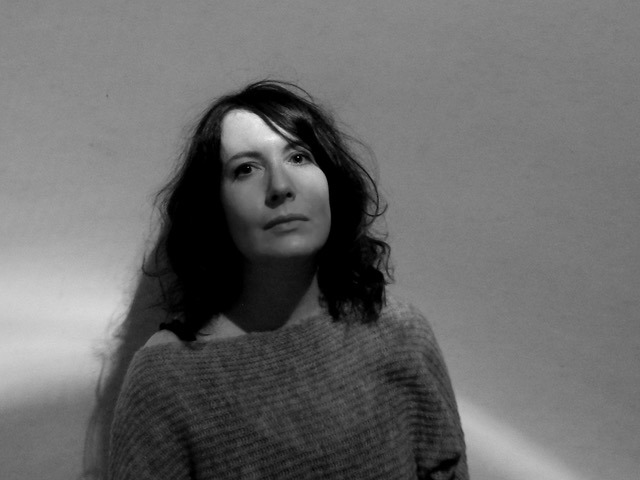
— You were born in London and now you live in Berlin. Why did you leave London? Is Berlin a better place for contemporary music?
I left London a very long time ago, 1995 to be precise. That’s when I moved to Holland. After that I went to Columbia University in New York for a couple of years, then I lived in Brussels for fifteen. I never went back to live in my home city (and I’m not sure I ever will). It’s an expensive place to live, and although there are lots of really good composers there and interesting projects going on, I know I’d struggle to find my place there aesthetically-speaking. Living in the centre of Europe makes a lot of sense for a composer who wishes to work internationally. Berlin, of course, is absolutely packed with composers and concerts. You have a feeling that new music could never die here, that it would keep on going no matter what happens.
— Which composer had the most impact on you? Who are your favourite composers?
That’s always a hard question! When I was young Xenakis and Ligeti made a big impression on me, and Barrett of course. Aldo Clementi and Heinz Holliger after that. Much later on it was the music of the Austrian composer Peter Ablinger and some of the Wandelweiser composers who really made me rethink the direction of my own work. I suppose I also have a bit of a soft spot for a certain kind of American music: Charles Ives, Morton Feldman, Maryanne Amacher and Alvin Lucier are all important to me. In terms of classical music proper I have very conventional tastes, Bach and Beethoven, and I listen to them a lot. I am not so interested in opera. Early 20th Century? I’d say Bartok, Debussy and Berg. In terms of my contemporaries I should be careful: I have many very talented composer friends whose work I admire, so I’ll just mention one, the German composer Hannes Seidl. His works with the performance maker Daniel Kötter are always pushing at the edge of what new music can do in unexpected and sophisticated ways.
— Do you know any Russian contemporary composers? Whose music do you like the most?
Not that many I’m afraid, though I have the impression that more experimental new music in Russia has been growing steadily in the past decades, and that some of it is pretty exciting. Again, I’ll just mention one name: I’ve seen a few pieces by Elena Rykova now and I am impressed by the breadth of her imagination which does not seem to have many limits. Her pieces always have a strange colour to them, like something from a dream (probably her dreams) and I find that quite inspiring.
— You mentioned that your passion to music has started with jazz. How did you find your way from jazz to electronic music? Does jazz still inspire you in any way?
If I’m to be honest my musical passion started before my love for jazz. From a very young age (maybe 4 or 5!) I was following pop music. The more serious my tastes became in my early teens, the less satisfied I was with what popular music could offer. I took up the saxophone when I was 14 and went to some group classes that were jazz-oriented. I couldn’t believe it the first time a teacher asked me to improvise over a chord progression, I thought they’d gone mad! But gradually jazz crept up on me. A fellow student gave me a mixtape of famous saxophone players, and I was completely struck by John Coltrane playing Giant Steps. That was the beginning of it, I continued playing jazz and collecting records. A few years later I decided to study classical music in school so that I would be eligible to do a music degree. There I came across lots of great 20th century classical music and I guess the idea was planted in my head that I’d like to be a composer. Working with electronics came much later. I’m not certain that the jazz influence is very apparent any more, what I do is so different now. I hope jazz is still there working under the surface in my musical subconscious somehow. What I have realized in recent years, however, is that I am not really “classical”, the music that affected me in my early years was pop and jazz, that’s where I come from.
— You use field recordings in your pieces. What devices do you use to make records? What programs do you prefer?
I’ve used various devices over the years. I bought a small Tascam when I first began but now I’ve had a Tascam Dr-100 for many years, I usually use two small external omni-directional microphones by Røde with it. I use Cubase to assemble the final electronics on, and Audiosculpt (it’s an IRCAM program) to do a lot of the processing as well as to help me with transcription. A friend made me a Max patch that does spectral freezing, but I generally don’t do live electronics. I feel like I can do everything I need with these three programs!
— You once mentioned that you prefer doing everything yourself, including films and texts for your pieces. How do you make videos? What programs do you use? Does the voice that we can hear in some of your works belong to you? The one in the Artificial Environments, for example.
Yes I do everything myself, and I like it that way! Except on Roll Call, where the voice part is performed live by the pianist, the voice you can hear on my works is me. I am the cheapest voice-over artist that I can find! Photographs form the basis for many of my works, either existing photos or ones I take myself. There are a couple of pieces with filmed footage (one of a kaleidoscope another of images taken from a moving train). Filming footage is perhaps the hardest thing for me to do and I often run into the limits of what I can achieve as an untrained camera man. Usually I end up having to film things over and over again until I manage to get everything right. Using existing photographs as material is technically easier though one has to do a lot of editing to make them interesting to watch. I use a linux photo-editing program called GIMP and then Final Cut to make the film.Final Cut used to be great but got messed up when Apple completely redesigned it. I make the films differently with each project. I often come to the images with a formal idea, a rhythmic structure or with the music already there and ready to be used as the template for the piece. I think I approach film with the mindset and ideas of a composer, that’s inevitable.
— How did you create the short film called The Grand Tour? Did you also make everything yourself? The music consists of musical quotations and field recordings, right? What pieces do you quote?
The Grand Tour was the first film I made. In a way, because it is made almost completely from found materials, you could say that I didn’t make any of it! I certainly didn’t make the original Tom and Jerry cartoon! But yes, I compiled, manipulated and edited all of the images and sound, and wrote the text myself. There were some points when I had to look at quite a few tutorials for photo and film editing because I wanted to do something slightly tricky (like the scene at the end where Jerry Mouse appears to be dancing on the floor of the Schloss Schönbrunn in Vienna). Because I am not a trained video editor I sometimes make things in strange ways, so all the step-by-step tracking and close-ups of photos are created from separate photos rather than using key frames in Final Cut. It creates a lot of material, but it’s easier to manipulate in terms of adjusting speed and duration, and trying to make pleasing accelerations. I guess I edit video the way a composer edits video, always wanting the flexibility to change rhythms on a micro and macro level! There are a few musical pieces, a lot of waltzes by Johann Strauss II (it’s a thematic connection that leads to the end of the film which takes place in Vienna). There is also Água de Beber as sung by Astrud Gilberto. I imagined it might be something that international language students would be dancing to in the 60s, and it’s also my favourite bossa nova tune. There’s a tiny bit of Taxman by the Beatles, and Alle Tanzen Lipsi to represent East Germany.
— I was very impressed with your multimedia composition called Roll Call. The video is the grey gradient slowly turning into a boy’s face. Later the viewer realizes that the image is actually a very large group photo of some student. You slowly guide us through each person’s story by music and prose. What’s the concept of this piece? Why did you choose this photo? There are some YouTube comments wondering if there’s a relative of yours in the photo.
I’m glad you like the piece! Actually, in a way it’s a prequel to The Grand Tour. I found the photo at the back of a drawer in my parents’ house after they had passed away. This picture is of my father’s school and he is the first person that the pianist talks about. He is the jumping off point for the piece but not the subject of it. “John” has no last name and his biography is the longest, and it’s also the only one that’s true. It’s an impressive photo (it’s absolutely huge) and when I first saw it I was struck by all the detail of these tiny little faces, and the more that I thought about it the more fascinated I was by the “potential history” embedded in the photo. There are 600 life histories there, most of that history still in the future at the time the photo was taken. I try to do a big formal cross fade in the piece between explicit spoken information (that “diminuendos” from a 2-paragraph biography to just a name) and the piano material that suggests things about the faces but not really anything concrete, just giving them a musical aura.
— Your pieces often deal with issues of memory. You said you wrote a lot about it in your PhD thesis. What does memory mean to you?
It’s a very complicated subject! Like all things related to the mind, we really don’t understand very much about it. I am a vivid dreamer and I try to write down my dreams, and I am fascinated by the way they evaporate so quickly because they are stored in the wrong part of the mind for remembering. Actually, among my friends, I am quite notorious for having an excellent autobiographical memory. In recent years, however, and it’s probably something to do with my age and all my accumulated experience, I feel that my memory is beginning to be full up. Things have disappeared. It’s always fascinating when a friend brings up something I said or did 20 years ago and I don’t remember it because it was something that was more important for them than it was for me. What has become more apparent to me in recent years though, is a stronger sense of era, history and nostalgia. I watch old television programs from my youth, and I can sense very strongly how 1979 felt different from 1989 or 1999. I’m not just thinking about eras objectively, but about how the convergence of my own personal history with the spirit of those times feels to me now from the vantage point of the present.
— You founded the Plus-Minus ensemble together with Matthew Shlomowitz. It was named after the famous Stockhausen’s piece. I love the name by the way. I think it’s kind of hardcore, you know, like those teens naming their bands after the songs they love. So what is Plus-Minus today? What’s its repertoire? How do you deal with pandemic? What ongoing projects do you have?
I think we wanted to be a bit hardcore when we came up with it, and I can’t remember if there were any other contenders for the name. I ran Plus-Minus with Matthew for 16 years, but last year I decided to take a step back. Living so far away from the group was making it hard for me to keep involved, for instance I couldn’t attend concerts, which is half the fun of organizing an ensemble. Now I still help out a bit, but it’s a smaller role. Matthew runs the group with the pianist Mark Knoop and clarinetist Vicky Wright. The group has stayed curious about all types of contemporary music practices and we “follow our nose” rather than what happens to be trending. Having embraced some of the performative and conceptual work that came to the fore some years ago, we have gotten back into playing great chamber music in recent times. We’ve also been strengthening our ties and expanding our activities in the universities, not just doing composer workshops, but also working with performers and engaging in creative projects there. We managed to negotiate the pandemic by getting student composers to write for solo instruments rather than the group as a whole, and this could all be done remotely. Of course that’s not ideal, but (as with the reMusik.org courses) the idea is to keep new music going as best we can.
— What are your further plans? Do you get commissions often? What are you working on right now?
I’ve been lucky enough to be able to live mostly from commissions over the past years. So, I rely on getting a certain number of them a year. There is uncertainty in the air at the moment and I’m not sure what will happen to some of my future projects. But over the next years I do have two larger scale pieces planned, one about the 19th century British photographer Eadweard Muybridge, and the other concerning the idea that sound waves live forever (only getting quieter as time goes by). Both pieces are for chamber ensemble, and therefore when I say large scale I am referring to duration. I’ve never written a piece longer than 25 minutes, andthis will be a fresh challenge for me. Right at this moment I’m writing two pieces that I hope will be premiered in the autumn, both for small chamber ensemble and electronics, for the Ives Ensemble from the Netherlands and Explore Ensemble based in the UK. One is about the random music that is generated by cars on a motorway, and the other, which has video as well, explores a kind of blurry journey through the streets of Berlin, as if in a dream-like state.
More about Joanna Bailie visit joannabailie.com

